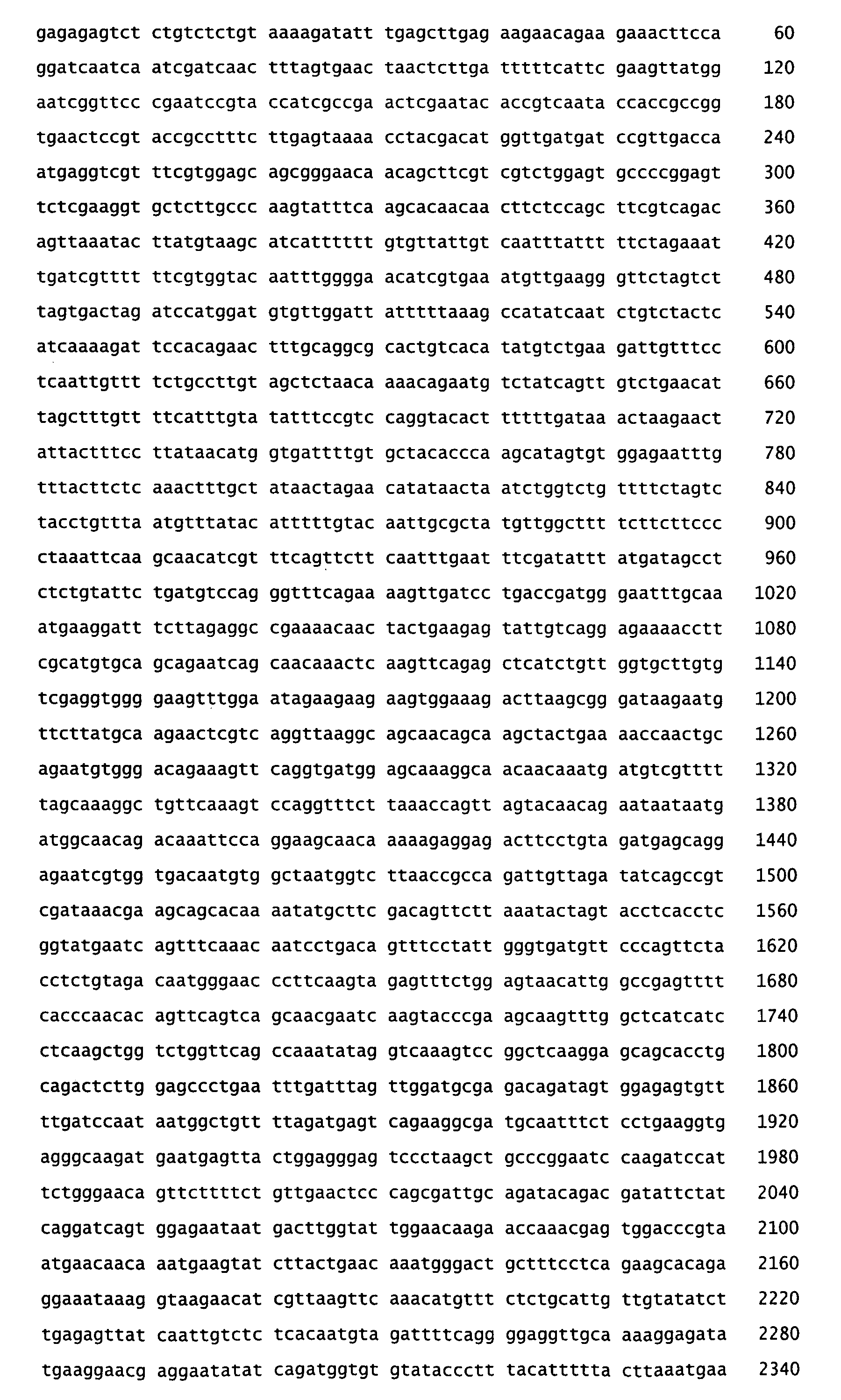Plant Responses
a technology for plants and traits, applied in biochemistry apparatus and processes, organic chemistry, sugar derivatives, etc., can solve the problems of significant drought tolerance, limited success of conventional breeding to improve, and compromise the development of transgenic plants under normal conditions. , to achieve the effect of improving plant productivity, improving water use efficiency, and improving plant tolerance to abiotics
- Summary
- Abstract
- Description
- Claims
- Application Information
AI Technical Summary
Benefits of technology
Problems solved by technology
Method used
Image
Examples
example 1
Creating a Construct and Transforming Plants
[0074]The creation of the plant described here has been published (Prandl et al 1998). Briefly, a full length 1.7 kb cDNA fragment containing the entire Hsf3 coding sequence was inserted as a BamH1 fragment into the binary Ti vector pB1121, base on the well-known vector pBIN19. This procedure fused the cDNA to the CaMV 35S promoter. The mRNA would also contain a GUS coding sequence followed by a nos polyadenylation sequence. Moncistronic constructs fused to 35S promoter have also been created for transformation into crop plant species.
example 2
Plant Growth in Response to Drought and Well Watered Conditions
[0075]Plants were grown in controlled environment rooms under short day (8 h light / 16 h dark) at 22° C. and 60% relative humidity. The Wild type (right) and 35S:AtHSF3 (left) plants are shown in FIG. 3. The plants were not watered for 2 weeks in a controlled environment room. These plants were typical in their response.
[0076]As shown in FIG. 4, the 35S AtHSF3 plants recover sufficiently from prolonged drought stress so that upon re-watering they flower and set seed. Wild type plants do not recover.
[0077]It was also shown that 35S-AtHSF3 plants have higher leaf temperatures. Under well-watered conditions, 35S-AtHSF3 plants have a 1.5-2.5° C. higher leaf temperature, implying a reduced transpiration rate and a lower stomatal conductance.
[0078]Plants were grown in individual pots for 4 weeks in the controlled environment room as described above. After 4 weeks plants were transferred to the glass house under long day and wat...
example 3
Measurement of Photosynthetic Electron Transport
[0083]This was done by measuring the maximum efficiency (Fv / Fm) of photosystem II. Whole rosette or leaf Fv / Fm values were taken to indicate their response to the drought treatment using a chlorophyll a fluorescence imaging system (Fluorimager; Technologica Ltd, Colchester, UK) as described by Barbagallo et al 2003.
[0084]CO2 gas exchange measurements were carried out on leaves of 5 week old plants using a CIRAS-2 (PP systems, Hitchin, U.K) CO2 / H2O Infra Red Gas Analyser. Photosynthetic electron transport rates higher in drought-stressed 35S-AtHSF3 plants. The quantum efficiency of photosynthetic electron transport showed no difference between the genotypes in watered conditions, but was 15% better after 11 days of drought in 35S-HSF3 versus wild type (see FIG. 5b). There were no differences between 35S-AtHSF3 and wild type in the response of photosynthetic CO2 exchange to intercellular CO2 concentration when well watered. These paramet...
PUM
| Property | Measurement | Unit |
|---|---|---|
| water content | aaaaa | aaaaa |
| quantum efficiency | aaaaa | aaaaa |
| stomatal conductance | aaaaa | aaaaa |
Abstract
Description
Claims
Application Information
 Login to View More
Login to View More - R&D
- Intellectual Property
- Life Sciences
- Materials
- Tech Scout
- Unparalleled Data Quality
- Higher Quality Content
- 60% Fewer Hallucinations
Browse by: Latest US Patents, China's latest patents, Technical Efficacy Thesaurus, Application Domain, Technology Topic, Popular Technical Reports.
© 2025 PatSnap. All rights reserved.Legal|Privacy policy|Modern Slavery Act Transparency Statement|Sitemap|About US| Contact US: help@patsnap.com



